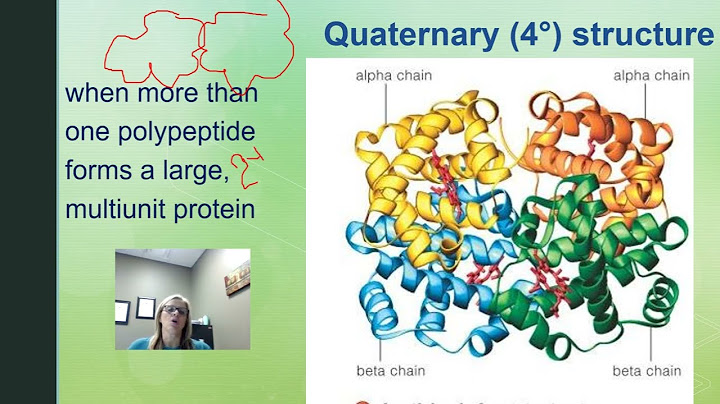Genetics research studies how individual genes or groups of genes are involved in health and disease. Understanding genetic factors and genetic disorders is important in learning more about promoting health and preventing disease. Show
Some genetic changes have been associated with an increased risk of having a child with a birth defect or developmental disability or developing diseases such as cancer or heart disease. Genetics also can help us understand how medical conditions happen. How We Get Our GenesPeople get (inherit) their chromosomes, which contain their genes, from their parents. Chromosomes come in pairs and humans have 46 chromosomes, in 23 pairs. Children randomly get one of each pair of chromosomes from their mother and one of each pair from their father. The chromosomes that form the 23rd pair are called the sex chromosomes. They decide if a person is born a male or female. A female has two X chromosomes, and a male has one X and one Y chromosome. Each daughter gets an X from her mother and an X from her father. Each son gets an X from his mother and a Y from his father. Genetic DisordersGenetic disorders can happen for many reasons. Genetic disorders often are described in terms of the chromosome that contains the gene that is changed in people who have the disorder. If the gene is on one of the first 22 pairs of chromosomes, called the autosomes, the genetic disorder is called an autosomal condition. If the gene is on the X chromosome, the disorder is called X-linked. Genetic disorders also are grouped by how they run in families. Disorders can be dominant or recessive, depending on how they cause conditions and how they run in families. DominantDominant diseases can be caused by only one copy of a gene having a DNA mutation. If one parent has the disease, each child has a 50% chance of inheriting the mutated gene. RecessiveFor recessive diseases, both copies of a gene must have a DNA mutation in order to get one of these diseases. If both parents have one copy of the mutated gene, each child has a 25% chance of having the disease, even though neither parent has it. In such cases, each parent is called a carrier of the disease. They can pass the disease on to their children, but do not have the disease themselves. Single Gene Disorders Some genetic diseases are caused by a DNA mutation in one of a person’s genes. For example, suppose part of a gene usually has the sequence TAC. A mutation can change the sequence to TTC in some people. This change in sequence can change the way that the gene works, for example by changing the protein that is made. Mutations can be passed down to a child from his or her parents. Or, they can happen for the first time in the sperm or egg, so that the child will have the mutation but the parents will not. Single gene disorders can be autosomal or X-linked. For example, sickle cell disease is an autosomal single gene disorder. It is caused by a mutation in a gene found on chromosome 11. Sickle cell disease causes anemia and other complications. Fragile X syndrome, on the other hand, is an X-linked single gene disorder. It is caused by a change in a gene on the X chromosome. It is the most common known cause of intellectual disability and developmental disability that can be inherited (passed from one generation to the next). Chromosomal AbnormalitiesDifferent Number of ChromosomesPeople usually have 23 pairs of chromosomes. But, sometimes a person is born with a different number. Having an extra chromosome is called trisomy. Missing a chromosome is called monosomy. For example, people with Down syndrome have an extra copy of chromosome 21. This extra copy changes the body’s and brain’s normal development and causes intellectual and physical problems for the person. Some disorders are caused by having a different number of sex chromosomes. For example, people with Turner syndrome usually have only one sex chromosome, an X. Women with Turner syndrome can have problems with growth and heart defects. Changes in ChromosomesSometimes chromosomes are incomplete or shaped differently than usual. Missing a small part of a chromosome is called a deletion. A translocation is when part of one chromosome has moved to another chromosome. An inversion is when part of a chromosome has been flipped over. For example, people with Williams syndrome are missing a small part of chromosome 7. This deletion can result in intellectual disability and a distinctive facial appearance and personality. Complex ConditionsA complex disease is caused by both genetic changes and environmental factors. Complex diseases also are called multifactorial. Most chronic diseases, such as heart disease, cancer, and diabetes, are complex conditions. For example, while some cases of cancer are associated with inherited genetic changes, for example, Lynch syndrome and hereditary breast and ovarian cancer, the majority most likely are caused by changes in several genes acting together with environmental exposures. For More Information
Which of the following is a biological or genetic factor that affects a population's health?Examples of biological and genetic determinants of health include age, sex, inherited conditions and genetic make-up.
What are the 4 major determinants of health explain each determinant?The determinants of health include: the social and economic environment, the physical environment, and. the person's individual characteristics and behaviours.
What is physical determinant?Physical determinants are factors related to the physical conditions in which we live, such as exposure to pollution and the structure of the built environment around us.
What are the determinants of disease?In the definition of epidemiology, “determinants” generally includes the causes (including agents), risk factors (including exposure to sources), and modes of transmission, but does not include the resulting public health action.
|

zusammenhängende Posts
Werbung
NEUESTEN NACHRICHTEN
Wie lange braucht leber um sich vom alkohol zu erholen
1 Jahrs vor . durch ElectromagneticSubcommitteeWerbung
Populer
Werbung

Urheberrechte © © 2024 de.ketajaman Inc.


















